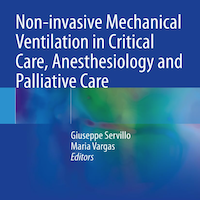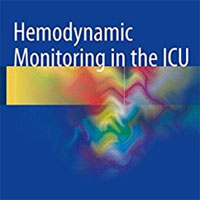Tag: ICU
Severe Listeriosis in the ICU: Critical Insights from a Multicenter Study
A retrospective multicenter study across 23 French hospitals over 10 years analyzed critically ill ICU patients with culture-confirmed "Listeria monocytogenes" infections. The study aimed to describe patient characteristics,... read more
Seraph-100 Hemoperfusion: Clearing Pathogens and Enhancing Outcomes in Sepsis
This study evaluated Seraph-100 hemoperfusion (HP) as a treatment for sepsis in intensive care unit (ICU) patients admitted after cardiac surgery for infective endocarditis (IE). Thirteen septic patients received Seraph-100... read more
Push-Dose Epinephrine Use in the Emergency Department
A retrospective multi-site cohort study investigated the use of push-dose epinephrine (PDE) in emergency departments (EDs) for managing hypotension in critically ill patients. Recognizing the limited ED-specific data compared... read more
Impact of Esketamine vs. Remifentanil on Hemodynamics and Outcomes in Mechanically Ventilated Septic Shock
This single-center, prospective, randomized, controlled pilot study compared the hemodynamic effects and prognosis of esketamine versus remifentanil, both used in combination with propofol, for sedation and analgesia in patients... read more
Vitamin D Dynamics in Severe ARDS Patients on ECMO
This retrospective study investigated time-dependent changes in vitamin D levels and their correlation with disease severity and inflammation in 24 invasively mechanically ventilated patients with acute respiratory distress... read more
Troponin HsTnI: Predicting Outcomes in Covid-19 Patients
This observational retrospective cohort study of 325 patients diagnosed with COVID-19 aimed to determine the relationship between troponin levels and disease severity or mortality. Conducted at Mohammed VI CHU in Oujda... read more
Non-invasive Mechanical Ventilation in Critical Care, Anesthesiology and Palliative Care
This book provides an easy, modern and practical way for physicians to approach the world of noninvasive mechanical ventilation (NIMV). Noninvasive ventilation is well-established and increasingly used in routine clinical... read more

Finding the Ultimate Sedative
Critically ill patients requiring invasive mechanical ventilation often need continuous sedation for pain and anxiety. Propofol, a GABA potentiator, and Dexmedetomidine, an α2-adrenergic receptor agonist, are commonly used... read more
Early Multimodal Rehabilitation Safely Accelerates Recovery for Ventilated Patients
This single-center, controlled clinical trial investigates the efficacy and safety of an early multimodal rehabilitation program (MRP) versus a late MRP in mechanically ventilated adult patients in the intensive care unit... read more
Propofol vs. Midazolam Infusion: Effects on Cardiovascular Stability in Critically Ill Patients
A study compared the effects of propofol and midazolam infusions on cardiovascular stability in 75 critically ill patients requiring sedation in the intensive care unit at Azadi and Tikrit Teaching Hospitals from December... read more
Causes of Death in Patients Undergoing ECPR
Refractory shock was the leading cause of death among our cohort of extracorporeal cardiopulmonary resuscitation (ECPR) patients, followed closely by neurological complications, while other causes are rare. In this post-hoc... read more
Mechanical Power Impact Normalized to Predicted Body Weight on Outcomes in Pediatric ARDS
Higher mechanical power (MP) was associated with fewer ventilator (VFD) and ICU free days (IFD). The causal effect of MP on VFD and IFD was fully mediated by the impairment in oxygenation. This is a post-hoc analysis of... read more
Anticoagulation Reversal Strategies for Warfarin Associated Acute Gastrointestinal Bleeding
Patients who received prothrombin complex concentrate (PCC) had a threefold increase in mortality compared to fresh frozen plasma (FFP), vitamin K alone, or no reversal, even after adjusting for severity of the bleeding.... read more
Endotracheal Tube Cuff Pressure Monitoring and VAP Occurrence
This study demonstrated that maintaining endotracheal tube cuff pressure at 30 cm H2O through monitoring every 8 h did not result in a greater incidence of under-inflation (pressures ... read more
Association Between Initial Blood Product Transfusion with a Higher Plasma-to-red Blood Cell Ratio and Mortality in Adults with Severe Bleeding Following Trauma
This study demonstrates that a high fresh-frozen plasma (FFP) to packed red blood cells (PRBC) ratio (>1:1.5) is associated with reduced 24-hour and 30-day mortality rates among trauma patients with massive hemorrhage. However,... read more
Intubating the Critically Ill Patient: A Step-by-Step Guide for Success in the ED and ICU
Intubating critically ill patients is a process that requires a well-thought-out, step-by-step plan, specific to each patient. This book teaches the steps necessary to predict, prepare, perform, and provide pre and post-intubation... read more

Hemodynamic Stabilization Using CRRT and cIVNa Combination Therapy
Compared with conventional continuous renal replacement therapy (CRRT), combination therapy of CRRT and continuous intravenous sodium infusion therapy (cIVNa) increased blood pressure, enhanced urinary volume, and reduced... read more
Hemodynamic Monitoring in the ICU
This book describes the pathophysiological significance of the hemodynamic monitoring parameters available to the clinician and their role in providing reliable and reproducible information on the cardiocirculatory status... read more

A Novel Mechanism for COVID-19 Related Thrombotic Events: Platelet NO/ROS Equilibrium
The finding that platelet NO/ROS production imbalance contributes to the elevated risk of thrombotic events in COVID-19 has important clinical implications. Restoration of platelet NO production, as well as attenuation... read more
Inadequate Empirical Antibiotic Therapy in VAP: Risk Factors and Outcomes
Ventilator-associated pneumonia (VAP) caused by MDR pathogens were highly likely to receive inadequate empirical antibiotic therapy. The mortality rate and intubation duration were significantly longer in inadequately treated... read more
Early Acetaminophen Administration Associated with Lower Mortality Among ARDS Patients After Coronary Artery Bypass Grafting
The use of acetaminophen (APAP) at 48h after coronary artery bypass grafting (CABG)-acute respiratory distress syndrome (CABG-ARDS) was associated with lower early postoperative mortality, while shortening the length of hospital... read more
Thirst Management in Orotracheally Intubated and Mechanically Ventilated Patients
Symptom Management Theory (SMT)-based thirst management is an effective strategy. The 5 mL cold water spray method significantly reduces thirst intensity and distress in mechanically ventilated patients under fasting and... read more








